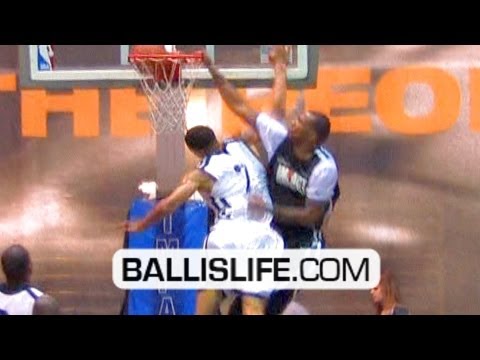With the Big 12 announcing Tuesday that it authorized Commissioner Bowlsby to explore expansion options, speculation on Houston’s viability as a candidate may once again commence.
//platform.twitter.com/widgets.js
Coupled with the announcement, the Houston Chronicle reported that Associate AD Hunter Yurachek met with Pac-12 commissioner Larry Scott this week in an attempt to “keep our options open” in the event that the Big 12 passed on Houston if it even bothers to expand.
So which conference would be a better fit for Houston? If we are looking at historic rivalries and geographical fit, the Big 12 immediately jumps out as the better choice, but they did add West Virginia not-so-long ago, so geography doesn’t seem to matter much to the Big 12.
I decided to compare Houston with the other schools in both conferences based upon athletic budget, media rights, stadium size, travel distance, and football win/loss records.
1. Budget
This category is not really fair because both the Big 12 and Pac-12 have incredibly lucrative television deals and each member receives significantly more than the entire AAC. However, let’s look at expenses and revenue from the 2014-2015 season and where Houston ranks in each conference.
In total expenses, Houston spent $45,437,942 million, a pretty hefty sum for a G5 team, but paltry compared to the other P5s. The thriftiest school in the Pac-12 is Utah, which spent a miserly $58,734,014 million, while the biggest penny-pincher in the Big 12 is Kansas State, spending only $67,316,209 million.
The average Big 12 team spent $98,491,826.13 (minus TCU and Baylor, who did not report expenses). The average Pac-12 team (minus Stanford and USC) spent $82,774,493.10. Houston would need to spend an extra $37 million to be a middle-of-the-road Pac-12 team and $53 million to be an average Big XII school. Ouch!
In total revenue, Houston made $44,815,210 million in total revenue. Washington State, despite the disparity, was last in the Pac-12 with $54,112,604 million. That’s less than $10 million and one easily matched by the extra revenue brought in with a conference switch. Iowa State was the smallest revenue generator in the Big 12 at $75,283,516 million.
Advantage = Pac-12.
2. Media rights
The fact that Houston is in a major television market is no surprise. With the Big 12’s new television deal, Houston would take in at least the average for the conference totaling $25.3 million per school in 2015. That result could actually increase, but cannot decrease. That’s good news for the Cougars because the Big 12 already has a significant footprint in the Houston area.
The situation with the Pac-12 is much different. The conference would likely have to renegotiate its television contract. The benefit to adding Houston would be to push the Pac-12 Network into a major market that it is not currently holding. In 2015, the Pac-12 made roughly 25.5 million per school. With Houston that could be higher, but we would not know for sure until it actually happened.
Advantage = even
3. Stadium facilities
These numbers are courtesy of Phil Steele‘s 2016 preview. A stadium is only judged by its number of seats, and believe it or not, TDECU Stadium is not last in the number of seats held in the Pac-12. Washington State’s Martin Stadium holds only 32,952 people and was built back in 1972. Oregon State’s Reser and Utah’s Rice-Eccles stadiums both hold just over 45,000.
In the Big 12, both Baylor’s McLane and TCU’s Amon G. Carter stadiums hold 45,000, only slightly higher than TDECU.
If Houston increased capacity by 20,000 seats to it’s full 60,000, it would rank sixth in the the Pac-12 and tie WVU for sixth in the Big 12.
Advantage = Pac-12 (Slightly)
4. Travel Distance for Opponents
Were you to pick up some friends at TDECU Stadium and drive straight to the Darrell K. Royal Texas Memorial Stadium in Austin, it would take a measly 2.5 hours. At 165 miles (according to Google maps), it is the shortest Big 12 road trip. A drive to Mountaineer field in WV would be 1,328 miles. That’s still just slightly further than the closest Pac-12 stadium, Arizona Stadium (home of the Wildcats) in Tucson. Taking a road trip to Husky Stadium in Seattle, WA would put a whopping 2,324 miles onto your car’s odometer. Good thing they’re in the Pac-12 North!
The average road trip distance for the Big XII is 584 miles. The average Pac-12 road trip: 1,562 miles.
Advantage = Big 12
5. Win/loss records
Believe it or not, Houston is just slightly under .500 against current Big 12 opponents, clocking a 0.477 winning percentage. Their total win/loss record is 61-67-5, but they have never played Iowa St., West Virginia or Kansas St. The Coogs have not fared as well against the Pac-12 with a 15-24 record for a 0.385 win percentage. The only team from the Pac-12 Houston has never played is Stanford.
Advantage = Big 12
Conclusions
I don’t think there’s much doubt that the Big 12 would be a better geographic and historic fit for Houston’s future Power 5 conference, but ask any WVU fan in 2011 and they would have stated the ACC or SEC as a better fit for his/her team. Houston would fare just fine in either conference with a few renovations and facility upgrades made possible through much higher conference revenue. While the travel in the Pac-12 would be daunting, the chance to showcase Houston football yearly in Los Angeles would be worth the travel expense. Finally, while the historic rivalries between the Coogs and UT, Texas Tech and TCU are legendary, it would not be hard to see Houston vs. Utah, USC and UCLA being just as epic.
Add The Sports Daily to your Google News Feed!
